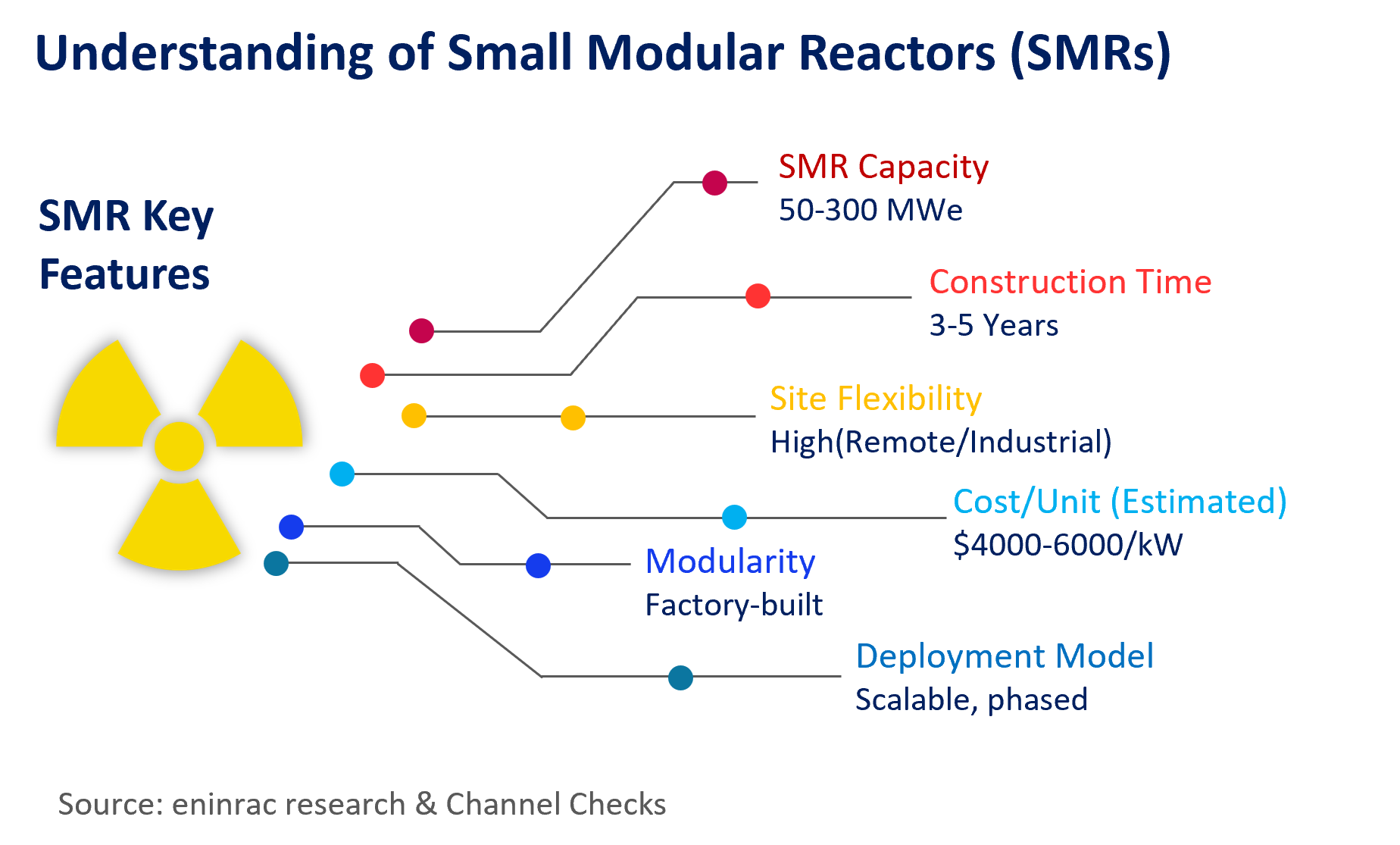
Report Summary Why Eninrac's market research report on India’s Small Modular Reactor (SMR) segment is essential for decoding a $20Bn opportunity and identifying high-potential deployment clusters through extensive stakeholder (VoC) insights
Small Modular Reactors (SMRs) In India - Mapping The $20 Billion Market Opportunity
Share Report
License Type
In addition to single user license
- About
India’s path to a low-carbon, energy-secure future is increasingly tied to its ability to diversify beyond coal and integrate clean baseload options. As of 2025, Small Modular Reactors (SMRs) have emerged as a viable, scalable, and policy-aligned option to complement large reactors and intermittent renewables, serving both grid and off-grid applications.
SMRs are poised to unlock a potential $20 billion opportunity in India’s nuclear segment over the next decade. Backed by indigenous R&D, global OEM interest, and a push for industrial decarbonization, SMRs could play a transformative role in India's energy mix. Offering passive safety features, modular construction, and greater siting flexibility, SMRs are poised to fill a critical gap in India’s clean energy transition by enabling faster, decentralized nuclear deployment across industrial and remote regions. - TOC
- USPs
- Key Highlights
- Report Insights
- Must Buy For
- Companies Mentioned
Report FAQs
Q: What are Small Modular Reactors (SMRs) and how do they differ from traditional nuclear reactors?
A: Small Modular Reactors (SMRs) are a new class of nuclear fission reactors designed to be smaller, safer, and more scalable than traditional large nuclear power plants. Unlike conventional reactors, SMRs can be factory-fabricated, transported, and installed modularly, reducing construction time and costs.
Q: Why is India exploring SMRs as part of its energy transition?
A: India is exploring SMRs to ensure 24x7 clean base-load power, reduce carbon emissions, support industrial decarbonization, and complement intermittent renewables like solar and wind in achieving net-zero targets.
Q: Who are the key players in India SMR ecosystem?
A: Key players include NPCIL, BHEL, NTPC, L&T, GE-Hitachi, NuScale, Rolls-Royce SMR, and Walchandnagar Industries, among others. Government bodies like the DAE, AERB, and Ministry of Power also play crucial roles.
Q: Which sectors in India can benefit the most from SMR deployment?
A: Sectors such as steel, cement, data centers, fertilizers, hydrogen production, and industrial parks can greatly benefit from reliable, zero-carbon energy from SMRs, reducing dependence on fossil fuels.
Q: Are SMRs safe and economically viable in India?
A: SMRs are designed with advanced passive safety systems and smaller radioactive inventories, making them inherently safer. Economically, while initial costs are high, mass production, modular deployment, and policy support can make them viable for India's energy needs.
Q: What are the investment opportunities in India’s SMR market?
A: There are opportunities for project developers, equipment manufacturers, financiers, and green hydrogen players. Entities like PFC, REC, JBIC, and Green Climate Fund may support capital-intensive projects aligned with India’s clean energy roadmap.
Q: How do SMRs align with India’s Net Zero 2070 goal?
A: SMRs offer a carbon-free, reliable power source that complements renewable energy, making them vital for achieving India's Net Zero emissions goal by 2070, especially in hard-to-abate sectors.
Q: What is the government’s stance on SMRs in India?
A: The Department of Atomic Energy (DAE) and NITI Aayog have expressed support for SMRs as a future-ready solution for India’s growing energy demand. Regulatory processes are being streamlined to enable faster deployment.
Q: What are the challenges facing SMR deployment in India?
Key challenges include high capital costs, limited domestic technology readiness, regulatory complexity, supply chain development, and public acceptance.
Q: When can we expect the first operational SMRs in India?
A: Pilot SMR deployments are expected in the late 2020s to early 2030s, depending on regulatory approvals, international partnerships, and financial closures.
Get your report flyer
Download the flyer to learn more about:
- Report structure
- Select definitions
- Scope of research
- Companies included
- Additional data points









